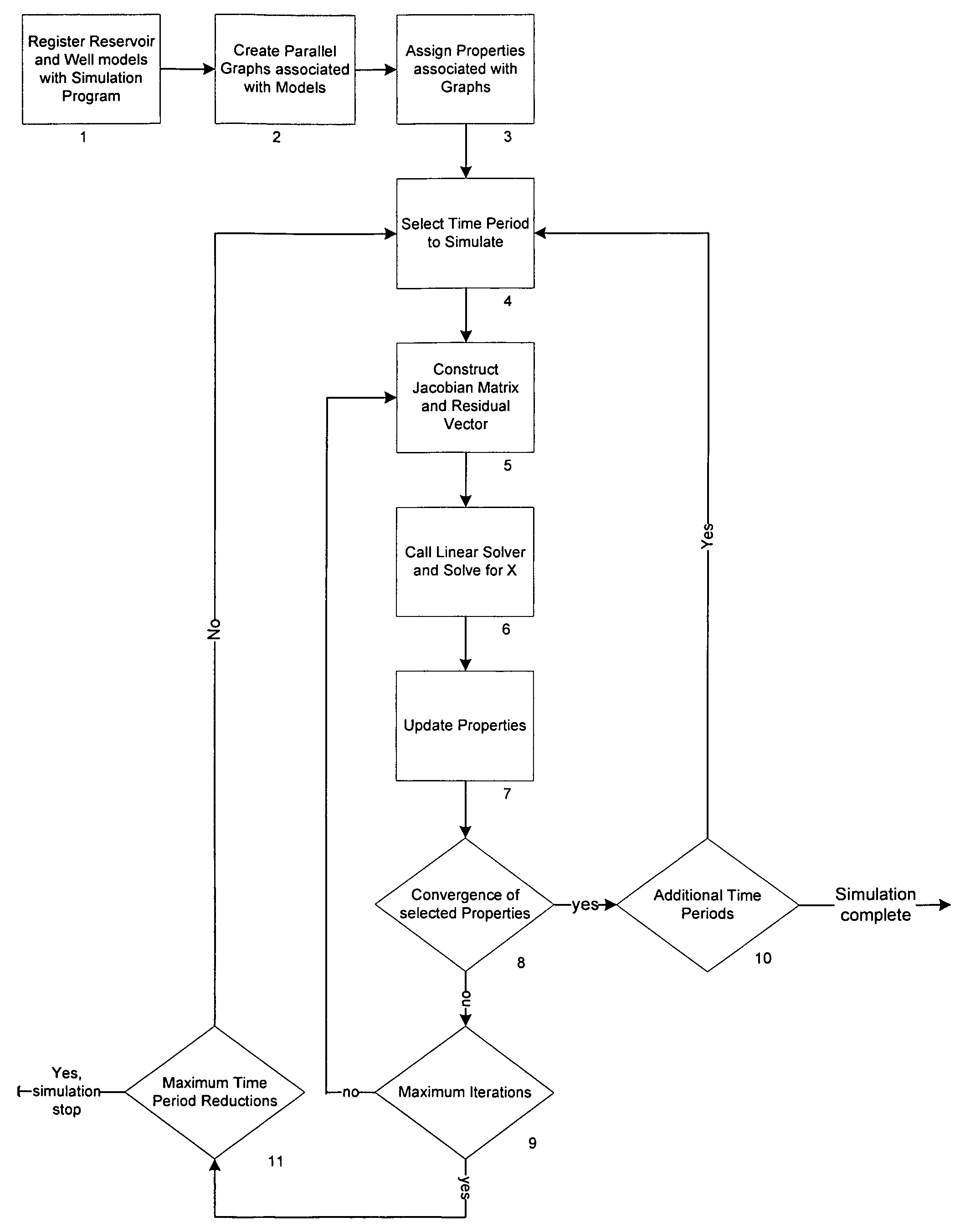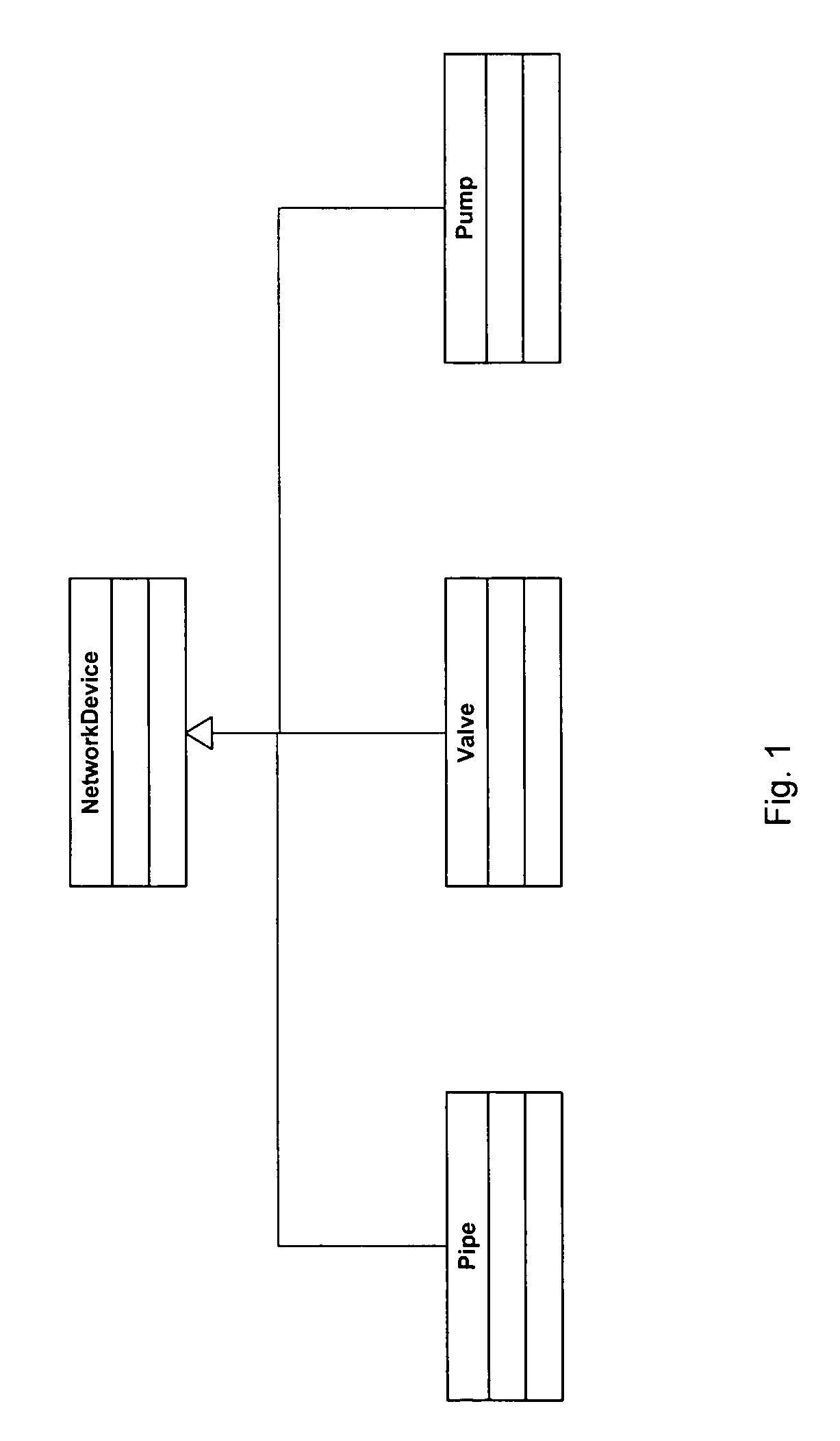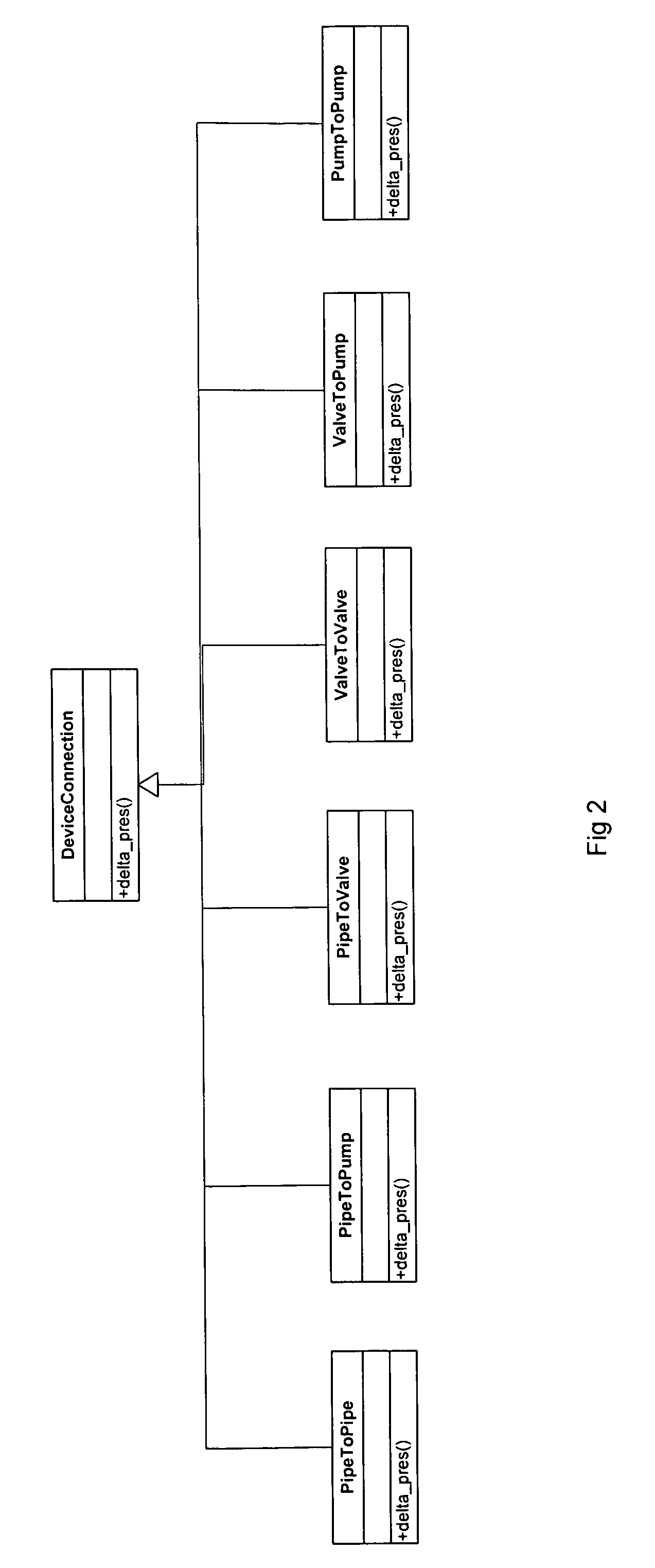Method, system and program storage device for simulating fluid flow in a physical system using a dynamic composition based extensible object-oriented architecture
a technology of dynamic composition and storage device, applied in the field of method, system and program storage device for simulating fluid flow in a physical system using a dynamic composition, can solve the problems of unfavorable scientific programming application, so as to minimize the effect of combinatorial expansion
- Summary
- Abstract
- Description
- Claims
- Application Information
AI Technical Summary
Benefits of technology
Problems solved by technology
Method used
Image
Examples
Embodiment Construction
A. Introduction
[0043]The present invention provides solutions to the shortcomings cited in the background section by using the object-oriented technique of composition as the basis of class hierarchies, coupled with a different decomposition of the class architecture. Inheritance is an extremely tight coupling mechanism while composition is simply embedding a class within another class and therefore provides much greater control over the degree of coupling. The embedded class is called the implementation class while the composed class is called the interface class. This technique is often referred to as the handle / body or bridge pattern. The approach promotes clear specification of the roles and responsibilities of the interface class, insulates clients of the architecture from changes in the implementations and results in a simpler architecture. A composition-based hierarchy can easily support dynamic configuration of program behavior to optimize the configuration of computation cl...
PUM
 Login to View More
Login to View More Abstract
Description
Claims
Application Information
 Login to View More
Login to View More - R&D
- Intellectual Property
- Life Sciences
- Materials
- Tech Scout
- Unparalleled Data Quality
- Higher Quality Content
- 60% Fewer Hallucinations
Browse by: Latest US Patents, China's latest patents, Technical Efficacy Thesaurus, Application Domain, Technology Topic, Popular Technical Reports.
© 2025 PatSnap. All rights reserved.Legal|Privacy policy|Modern Slavery Act Transparency Statement|Sitemap|About US| Contact US: help@patsnap.com



